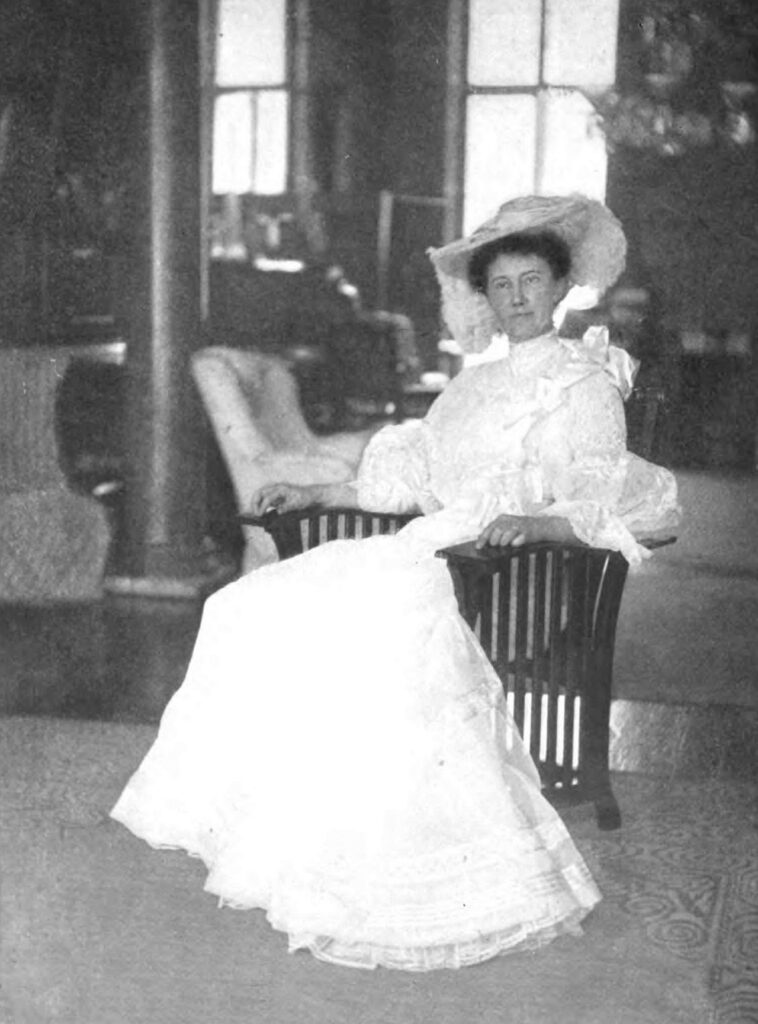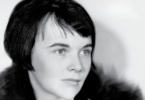
Is it a mystery that a highly prolific and successful woman author would be completely forgotten and lost to time? Not really. Times change, and tastes change. Over the decades, literally millions of books have been published. But it’s still fascinating when someone who wrote nearly two hundred books, including many best-sellers, could be relatively unknown, even to book collectors, a hundred years later.
Author Rebecca Rego Barry explores how this could happen in her new book, The Vanishing of Carolyn Wells: Investigations into a Forgotten Mystery Author, published by Post Hill Press in February 2024.
Carolyn Wells was born in 1862 in New Jersey. In her late twenties, single and living with her parents, Wells became the librarian in her hometown of Rahway. At the same time, she began submitting small punny poems, humorous verses, and children’s stories to magazines. According to Barry, her first published piece was “To the Dialect Poet,” published in Puck in June 1893. In 1896, she published her first book, At the Sign of the Sphinx: A Book of Charades. Wells continued to work at the library from 1890 until 1902 when she had a few books and numerous published articles under her belt and left to write full-time.
Wells did not limit her interests to one category. Her writing covered multiple genres, from humor to young adult to mystery.
Many of her young adult books were very popular, including the Patty Fairfield series of 18 books starting with Patty Fairfield in 1901 and the Marjorie Maynard series of six books starting with Marjorie’s Vacation in 1907.
Wells was also well-known for her humor and parody. Aside from frequent contributions to periodicals such as her friend Gelett Burgess’s The Lark, the Chap Book, the Yellow Book, and the Philistine, she also published multiple successful anthologies, A Parody Anthology (1904), A Satire Anthology (1905), A Whimsey Anthology (1906), A Vers de Société Anthology (1907) and A Nonsense Anthology (1910). Another popular humorous prose work was The Rubaiyat of a Motor Car (1906).
In her 46-year career, she published 182 mysteries, nonsense tales, and children’s books. Currently, on BIBLIO, around 100 titles are listed under Wells.
Eighty-two of the books were mystery books, including over sixty in her Fleming Stone Series and eight novels in the Pennington Wise series. Comparatively, Agatha Christie, who began publishing about 20 years after Wells, published 66 mysteries and 14 short story collections. Mary Roberts Rinehart, who was 14 years younger than Wells, published just over 60 books but hundreds of short stories and articles in popular publications, and according to Barry, was paid significantly higher salaries than Wells. Two decades into her writing career, Wells published a writing guide based on her work – The Technique of the Mystery Story (1913).
Carolyn also wrote for Hollywood, although the films based on her writing have been lost to time. Films such as The Mark of Cain (1917), Dearie (1927), The Woman Next Door (1919), and the Our Mutual Girl series (1914) are among the “7,000 other silent films made between 1912 and 1939 that disintegrated before they could be preserved” Barry notes. Although Wells often got top billing as the writer of the stories, her celebrity faded just like the lost films.
Her autobiography, The Rest of My Life (1937), was published in her 75th year.
Carolyn Wells died in March 1942 at the age of 79. Her last novel, Murder Will In, was published in June 1942.
At the time of her death, Wells did not have a literary agent or executor, leaving the vast majority of her legacy, the rights to her books, and her royalties to her maid, Mary O’Connell. Without an agent advocating for the reprint of her novels, Wells missed out on the booming paperback industry of the 1940s and 1950s that would have reinvigorated her sales and kept the memory of her books alive.
So—spoiler alert—it’s the marketing team in charge of your legacy that will decide if your name and books sell long after you’re dead. In another forgotten author blog, I mentioned how F. Scott Fitzgerald’s popularity waned until after his death when his books were reprinted for the troops in WWII.
Barry’s book includes multiple tie-ins with book collecting. Wells was a book collector, and like her writing, she had various interests, but her focus on Whitman left behind a traceable history. Wells composed a Bibliography and a collection of Whitman’s essays and also wrote the introduction to the 1929 Limited Editions Club of Leaves of Grass. She also left her impressive collection of Walt Whitman to the Library of Congress.
One of Wells’s most popular and enduring works also involved book collecting. Her 1936 novel Murder in the Bookshop was based on Alfred Goldsmith’s bookstore, At the Sign of the Sparrow, located at 42 Lexington Avenue in New York, and involved murder and a missing $100,000 book. Murder in the Bookshop was one of the first published in the genre of “Bibliomystery.”
Barry herself has an extensive background in book collecting and was the longtime editor of Fine Books & Collections magazine. It is implicit throughout her book that her journey to uncover Carolyn Wells’ lost legacy was made possible by librarians and booksellers who offer connections, books, and ephemera connected to the cause—book collecting once again saving the “lost ladies,” no longer lost.
Amy C. Manikowski is a writer living in Asheville, NC.







